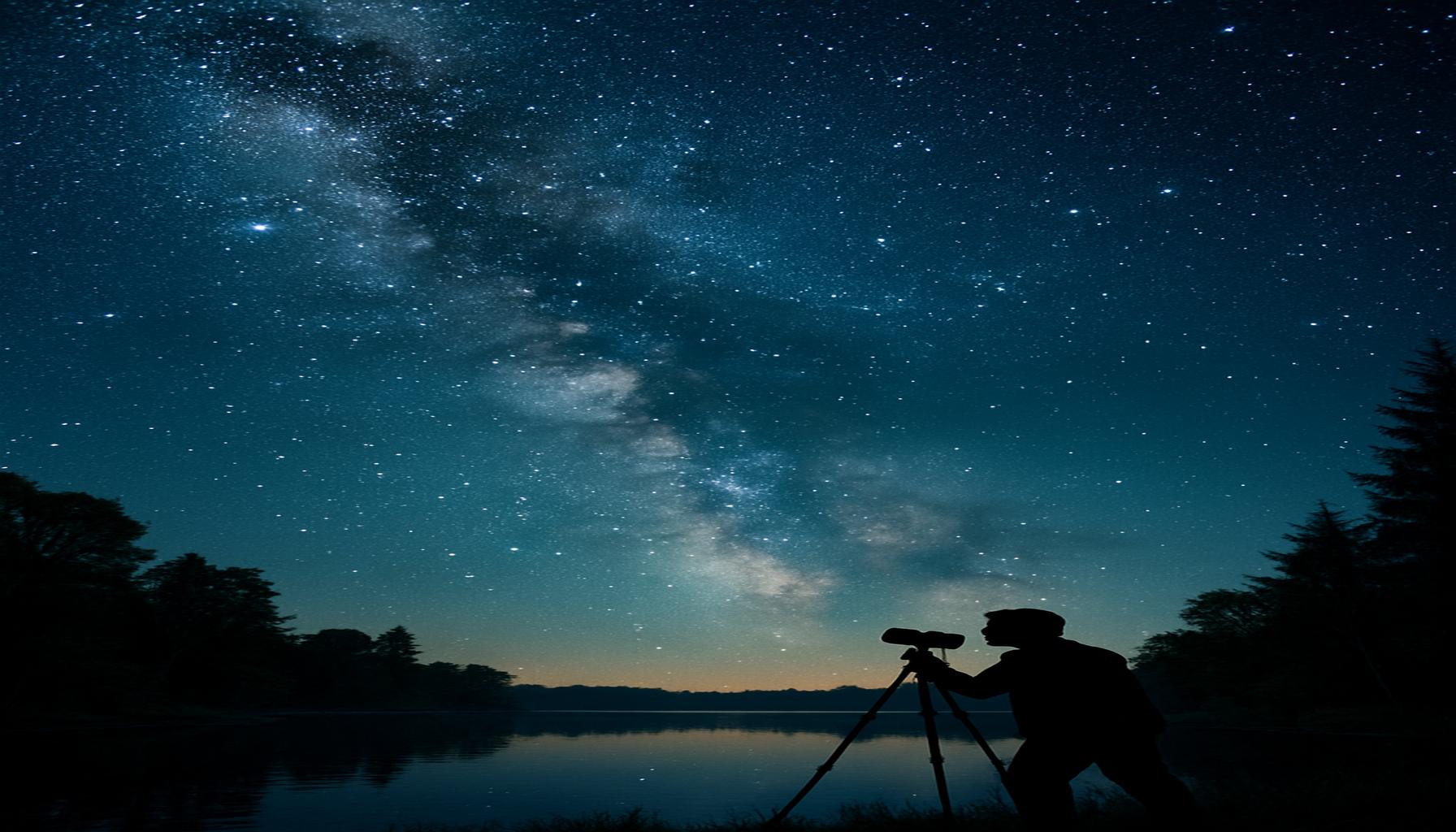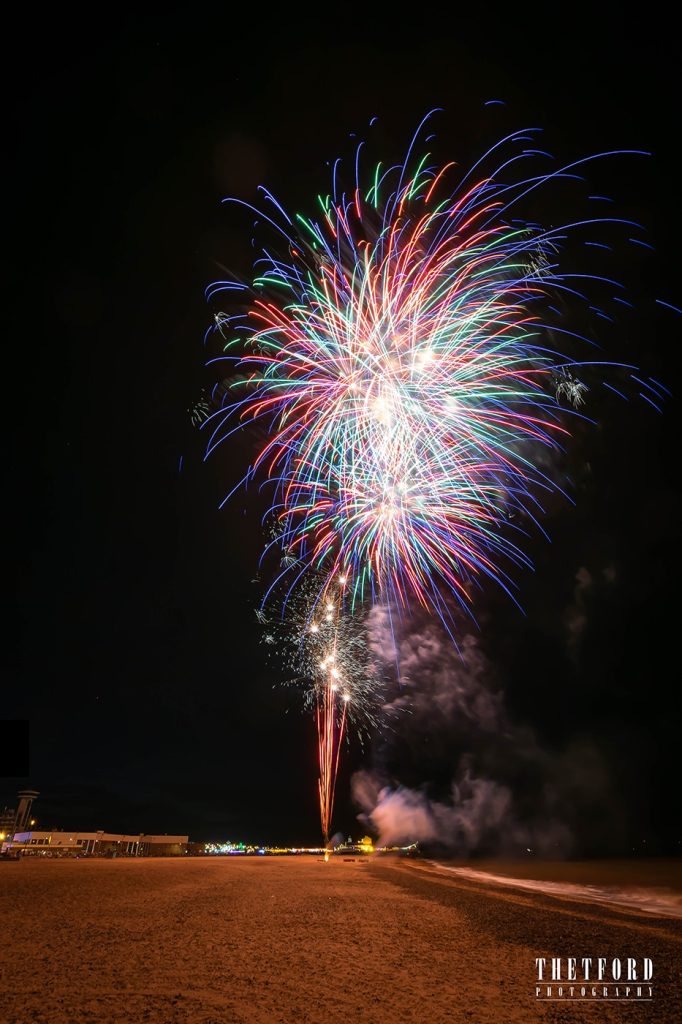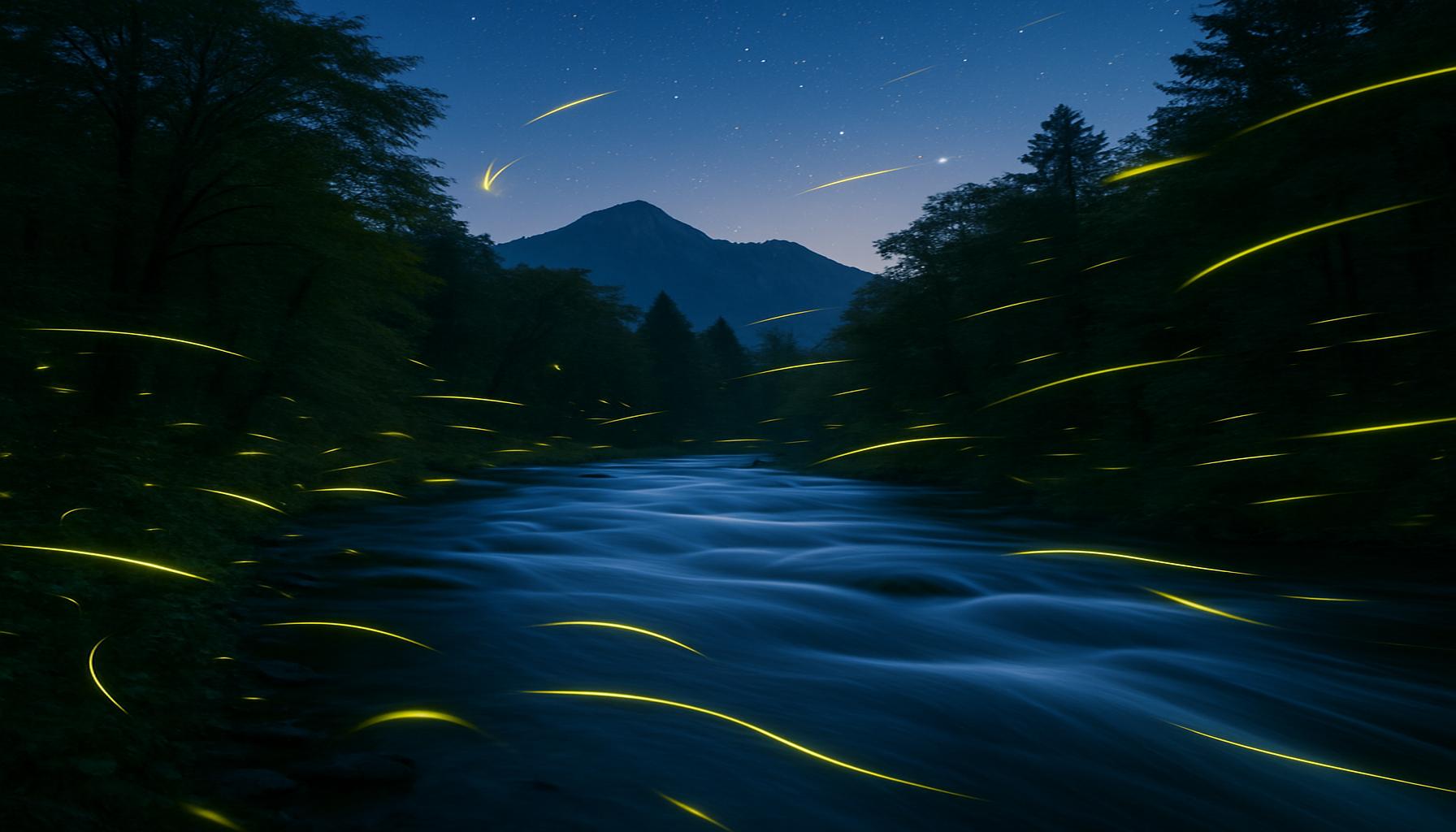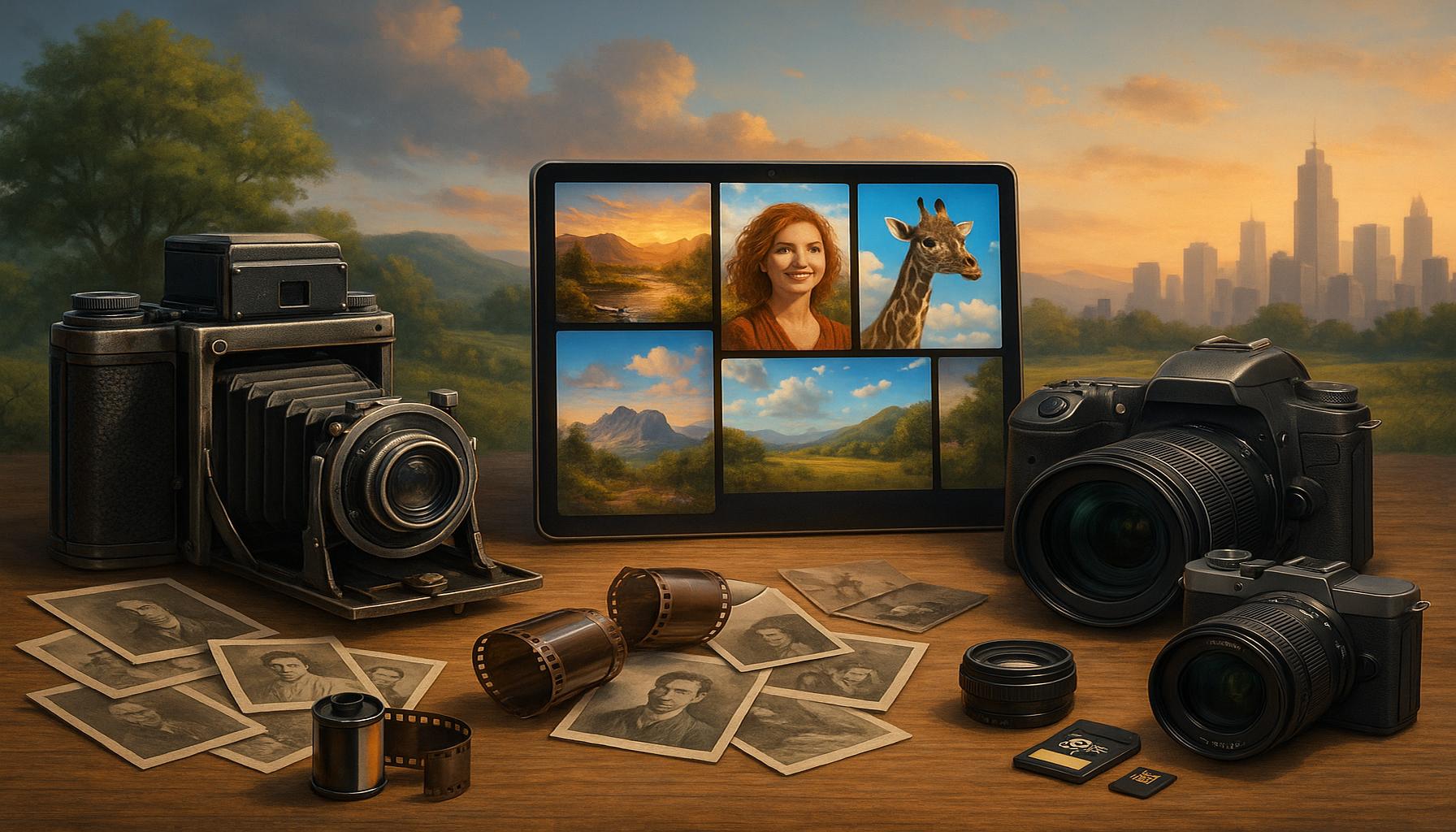Photography of Stars: Tips for Capturing the Night Sky in Its Fullness

Unlocking the Mysteries of the Night Sky
The vast universe above us is a breathtaking canvas filled with twinkling stars, mesmerizing constellations, and the occasional shooting star. For photography enthusiasts, capturing these celestial wonders can be a thrilling challenge. With the right techniques and tools, you can take stunning photographs that showcase the night sky in its full elegance. The act of photographing the cosmos is not just a technical endeavor; it intertwines artistry with science, allowing individuals to express their creativity while deepening their connection to the universe.
Why Photograph the Night Sky?
Astrophotography is gaining popularity among both amateur photographers and seasoned professionals for various reasons. It not only allows for creative expression but also invites you to connect with the cosmos. Consider the following advantages:
- Stunning Visuals: The night sky is a spectacle filled with beauty, from the vibrant colors of the Milky Way to the stark contrast of the moon against the pitch-black sky. Photographs can capture elements like star trails or the ethereal glow of the aurora borealis, showcasing nature in its most serene form.
- Scientific Observation: Astrophotography opens a window to the cosmos, allowing you to document various astronomical events, such as lunar eclipses, meteor showers, or planetary alignments. For example, capturing the Perseid meteor shower can provide insights into meteorological patterns while also yielding breathtaking images.
- Personal Connection: Engaging in night sky photography can evoke a deep sense of wonder and exploration. The experience of gazing at distant galaxies can be humbling, fostering an appreciation for the universe and our place within it. It often encourages individuals to learn more about astronomy and even inspires future generations to explore science.
Key Tips for Star Photography
Embarking on your astrophotography journey requires preparation and understanding of your equipment. Here are critical aspects to consider:
- Location: The right location is vital for capturing the night sky successfully. Opt for dark sites away from city lights to minimize light pollution. National parks, rural areas, or mountain tops often provide some of the best conditions for nighttime photography in the United States, as they offer expansive views with minimal interference from artificial light.
- Timing: Planning your photography session around the lunar cycle is crucial. Nighttime is ideal, particularly during new moons when the sky is darkest, which enhances visibility of stars and celestial bodies. Additionally, check for meteor shower schedules or celestial events using astronomy apps to time your outings.
- Equipment: Utilize a sturdy tripod to ensure stability during long-exposure shots. A camera capable of adjusting settings manually, like exposure time and ISO, is essential for capturing detailed images. Lenses with a wide aperture (such as f/2.8 or wider) allow for better light capture, which is critical in low-light scenarios.
As you dive deeper into this enchanting world of star photography, the skills and insights you acquire will open up new avenues for creativity and wonder. With each shot you take, from stunning pictures of the Milky Way to the intricate details of a nebula, you will be one step closer to mastering the art of astrophotography. Join us as we explore essential tips to capture the night sky in its full glory.
DIVE DEEPER: Click here to unlock the secrets of creative writing

Mastering the Essentials of Astrophotography
To truly capture the magnificent essence of the night sky, you must master several essential techniques and components. Beyond just having the right equipment, understanding how to optimize your settings, composition, and post-processing plays a significant role in creating head-turning astrological images. Here, we delve into the foundational elements that every aspiring astrophotographer should consider before venturing out into the starlit wilderness.
Understanding Camera Settings
When it comes to night sky photography, the settings on your camera are undeniably critical. Mastering these will elevate the quality of your images:
- ISO: This setting controls your camera’s sensitivity to light. For night photography, a higher ISO (typically between 1600 and 6400) is recommended to ensure that stars are bright and visible. However, be cautious, as too high an ISO can introduce noise, affecting the clarity of your images.
- Aperture: The aperture setting determines the amount of light that enters your camera. A wider aperture (lower f-number, like f/2.8) is preferable since it allows more light, which is essential for capturing the faint glow of stars and constellations.
- Shutter Speed: Longer exposures are key to star photography. Generally, you want to keep your shutter speed as long as possible without causing star trails, typically between 15 to 30 seconds, depending on your lens’s focal length.
Experimenting with these settings at different locations and times will provide you with invaluable experience, forging a clear understanding of how each element interacts in the pursuit of high-quality star photography.
Composition Techniques
Once your camera settings are dialed in, the next step is to focus on composition. An engaging photograph of the night sky tells a story and draws the viewer’s eye:
- Foreground Interest: Including elements in the foreground, such as trees, mountains, or structures, can provide context and scale, making your star images much more visually appealing.
- Leading Lines: Incorporate natural lines in your composition to guide the viewer’s gaze toward the stars. Paths, rivers, or fences can create a sense of depth and lead to the night sky.
- Rule of Thirds: This classic photography rule helps create balanced and dynamic images. Position key elements, including the horizon and celestial bodies, along the grid lines or at their intersections.
Using these composition techniques can significantly improve the impact of your night sky photographs, leading to captivating images that resonate with viewers.
As you hone these foundational skills and principles, the wonders of astrophotography will become increasingly accessible. Armed with knowledge of camera settings and composition techniques, you are well on your way to creating stunning starscapes that encapsulate the beauty of the universe. Prepare to embark on a journey that not only develops your photographic abilities but also deepens your appreciation for the celestial artistry that lights up the night sky.
Understanding Your Equipment
When venturing into the realm of astrophotography, the quality of your equipment significantly influences the outcome of your images. A camera that allows manual settings is a must for capturing long exposures. DSLR and mirrorless cameras are the most common choices among enthusiasts due to their low-light performance and the ability to change lenses. Pairing your camera with a solid tripod is essential; without it, even the slightest movement can lead to blurry photos. Another vital piece of equipment is a fast lens, typically with a wide aperture of f/2.8 or lower. This type of lens allows more light to enter the camera, boosting your ability to capture faint stars and celestial bodies. Additionally, investing in a remote shutter release can eliminate any camera shake caused by pressing the shutter button manually.
The Importance of Location
Location is crucial when it comes to astrophotography. Finding a dark sky with minimal light pollution is paramount for capturing the night sky in its full glory. National parks or remote areas away from urban lights often offer the best vantage points. Utilizing apps that track light pollution and moon phases can help you plan your stargazing adventures.Additionally, consider the geographical features of your chosen location: high elevations can offer clearer skies, while open fields can provide unobstructed views of the horizon. Always remember to check the weather forecast; cloudy nights will obscure your view of the stars and diminish the quality of your photographs.
| Equipment | Key Features |
|---|---|
| Camera Quality | Cameras with manual settings offer greater control over exposure times and ISO. |
| Tripods | Sturdy tripods are essential to maintain stability during long exposures. |
As you venture into the world of night sky photography, remember that practice makes perfect. Each night offers a new opportunity to experiment, learn, and capture breathtaking images of the stars. Keep exploring different settings and compositions, and over time, you will see your skills grow and your images improve.
DON’T MISS OUT: Click here to discover how to transform your space
Unveiling Advanced Techniques for Stellar Photography
Once you’ve grasped the essentials of camera settings and composition, it’s time to elevate your astrophotography skills with advanced techniques. These strategies not only enhance your ability to capture dazzling starry scenes but also expand the horizon of what’s possible in your night sky photography endeavors.
Utilizing Star Trails and Timelapse Techniques
One captivating style of astrophotography involves creating stunning star trails—an effect that showcases the movement of stars across the sky as the Earth rotates. To achieve this, you can utilize long exposure times, ranging from several minutes to even hours:
- Intervalometer: This handy tool allows you to take multiple long exposures automatically. Set your camera to shoot a series of photos, ensuring you cover a longer duration of time. Afterward, software can be used to stack these images into one mesmerizing composite that reveals the graceful arcs of stellar movement.
- Tracking Mounts: Investing in a star tracker can significantly enhance your star trail captures. These mounts compensate for the Earth’s rotation, permitting longer exposures without blurring the stars, allowing you to mix deep-sky astrophotography with star trails.
Experimenting with star trails opens up an entirely new realm of creativity, inviting unique storytelling as you document the transient beauty of the universe.
Incorporating Milky Way Photography
The Milky Way is one of the most sought-after celestial sights for photographers, offering a breathtaking canvas that can enhance your night sky images. To make the most of your Milky Way shots:
- Location: Choose a site far from city lights and pollution to appreciate the full splendor of the Milky Way. National parks like Yellowstone and national forests are excellent choices for their dark skies.
- Timing: The Milky Way is best visible during certain months, with a peak visibility typically occurring between March and October. Use smartphone apps that identify the Milky Way’s position to help in planning your shoots.
- Foreground Elements: Just like with regular night sky shots, adding elements like old trees, rock formations, or local landmarks will add depth and interest to your images.
Mastering Milky Way photography can illuminate the unique character of your night sky photography portfolio, bringing a touch of magic and emotion to your images.
The Importance of Post-Processing
Even when you’ve captured the perfect shot, the right post-processing techniques can enhance your astrophotography, allowing you to bring forth the vivid details in your images:
- Noise Reduction: Tools like Adobe Lightroom or Photoshop can help you manage noise levels that may arise from using high ISO settings. Aim to reduce noise without losing the fine details of stars.
- Color Calibration: Adjusting the color balance can reveal the natural hues of the cosmos, transforming your image from ordinary to extraordinary. The different parts of the Milky Way emit varying colors, and enhancing these can create an impactful final product.
- Image Stacking: For better image quality, consider stacking multiple images of the same scene. This technique can significantly improve detail and decrease noise, resulting in a higher dynamic range.
Post-processing seals the deal for your night sky photographs, transforming raw captures into breathtaking works of art. The combination of advanced techniques with effective editing skills will allow you to truly showcase the beauty of the stars.
By incorporating these advanced techniques into your astrophotography repertoire, you can elevate the quality of your compositions and create stunning images that capture the magnificent presence of the night sky in its full glory. As the universe beckons, ensure your camera is ready to capture the celestial wonders that await you.
DIVE DEEPER: Click here to uncover the evolution of digital photography
Conclusion
In capturing the mesmerizing beauty of the night sky, every moment becomes a story waiting to be told. The journey into astrophotography does not simply start with understanding camera settings, but evolves into a harmonious blend of patience, persistence, and creativity. Mastering advanced techniques like creating star trails and leveraging the breathtaking expanse of the Milky Way enhances your photographic repertoire, allowing you to depict the cosmos in its grandeur. These techniques not only deepen the visual impact of your images but also create a captivating narrative of the universe.
Additionally, the art of post-processing cannot be overlooked; it is in this phase that the final touch transforms your raw captures into stunning artworks, bringing the hidden vibrancy of the stars to life. Utilizing software effectively can help you manage noise and refine colors, making your photographs truly stand out.
As you venture out with your camera under the expansive sky, remember that the journey of astrophotography is as thrilling as the final image itself. Embrace the unpredictability of nature, experiment with various techniques, and continuously learn from each outing. Whether you’re a beginner or a seasoned photographer, the night sky offers endless opportunities to explore and create captivating images. So, gear up, step outside, and let the captivating dance of the stars inspire your artistry. The cosmos awaits your lens, ready to unveil its stunning secrets one click at a time.


